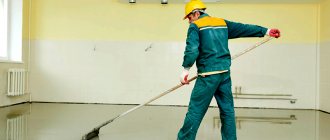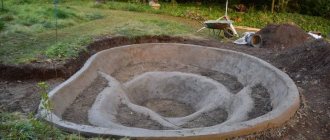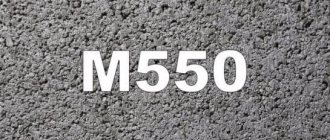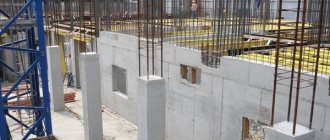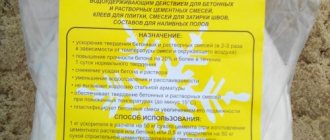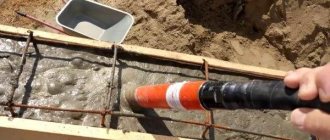Polyurethane paint
used for external and internal work on concrete, plastic, metal. After hardening, it forms a durable protective surface that is resistant to abrasion, atmospheric and mechanical stress.
Polymer-based paints and varnishes are recommended for covering walls, floors, and various structures.
What is polyurethane
Polyurethane is a polymer product resulting from oil refining.
Polyurethane is a polymer product resulting from oil refining. It can have different forms: solid, elastic and liquid. The latter is used in the manufacture of coloring materials. To obtain the desired consistency during production, stabilizers, catalysts and foaming agents are used.
If it is necessary to seal cracks, sinks, putty
The stage is implemented after priming. Before applying the polyurethane layer, you should make sure there are no seams or cracks . The work requires a spatula up to 600 mm wide, with a smooth edge that fits tightly to the floor. If there is a gap of even 1 mm, you should use a tool of smaller width.
Sequencing:
- seams and cracks are removed from dust using a powerful vacuum cleaner;
- the recesses are treated with impregnate;
- Polyurethane enamel is mixed with filler to form a thick putty. It is recommended to use 2 parts of dry sand of a fraction of 0.15-0.3 mm and 1 part of dusty quartz (marshallite);
- the surface is puttied;
- after 6-12 hours the floor is rubbed (sanded). Sanding continues until streaks from the spatula are removed;
- The floor is removed from dust using an industrial vacuum cleaner. The brush should fit tightly to the floor, ensuring maximum dust suction;
- Drying conditions depend on the climatic parameters of the environment.
Drying is carried out before painting. Time – 6-10 hours, but no more than a day.
Concrete paint based on polyurethane
Polyurethane paint for concrete is made on the basis of polyester resins. The composition also includes pigments, hardeners and fillers, which give the mixture the desired quality characteristics. The compositions are considered universal because they can be used for different types of surfaces under different conditions.
Advantages and disadvantages
The popularity of polyurethane paints for concrete is due to the following advantages:
- moisture resistance;
- resistance to chemical and temperature influences;
- weather resistance;
- hiding power;
- increased adhesion to the base;
- resistance to mechanical influence;
- wear resistance.
Among the disadvantages, consumers highlight the high cost of polyurethane coatings compared to other types of paints, as well as a small assortment, which means the choice of coating for the roof , floor, and facade is significantly limited.
Preparing the base
The task of preparation is to maximize the opening of concrete pores.
Work progress:
- The cement laitance (top loose layer), dirt, oil stains, and iron layer are removed. A grinding machine with diamond or corundum segments is used. For small areas, use hand brushes;
- During operation, sludge is formed, which is removed with scrapers; it is swept out of sinks with hard plastic brushes.
- the surface is dusted with a powerful construction vacuum cleaner;
- If necessary, reliable waterproofing of the concrete base is carried out.
When working with compounds, the use of a tool that produces a spark upon impact is prohibited.
The result: a perfectly polished surface, free of dust and other small particles.
Nuances of preparation:
- Shot blasting is used to reduce concrete defects. This ensures effective removal of fragile particles. The surface becomes rough, which increases the adhesion of polyurethane to the surface by 2.5 times;
- Grinding has a significant drawback - filling the concrete pores with dust, which reduces adhesion. It is recommended to use professional equipment with dust extraction into a construction vacuum cleaner.
When the preparation process is completed, movement on the floor without clean replacement shoes is prohibited.
Varieties by composition
Depending on the components, polyurethane enamel for concrete is divided into several categories, which differ in operational and technical characteristics, as well as cost. When deciding on the most suitable composition, you should carefully study all offers on the market.
Water-dispersed compositions
Aqueous dispersions are one-component polyurethane compositions. Water plays the role of a diluent. Due to this, the paints are harmless, adhere well to concrete and are moisture resistant. The coating does not require additional protection, since setting occurs due to moisture from the air.
Alkyd-urethane paints
These mixtures include alkyd urethane varnish, tinting pigments, solvent and drying agent. This combination helps to increase the protective properties of the coating. It is often used for painting metal parts, but it is also suitable for concrete floors and other surfaces. Among the advantages of these compositions are ease of application and high drying speed.
Based on organic solvents
Polyurethane paints based on organic solvents are resistant to aggressive substances. They are wear-resistant. They are used mainly in damp areas. Moreover, the higher the humidity level, the longer the coating takes to dry. After drying, the paint perfectly protects the concrete from moisture.
Scope of application
The coating is successfully used in various types of premises.
The most common of them include:
- logistics, production facilities, terminals, warehouses;
- food industry workshops where wet technological processes are implemented;
- parking lots, car services, workshops of transport enterprises with high loads;
- children's premises;
- areas for medical purposes;
- offices;
- machine rooms, laboratories, communications, electronics factories, freezers.
Technology of painting concrete with polyurethane paint
You can apply paint to concrete using a brush, roller or spray.
However, each method has disadvantages and advantages. The concrete is cleaned by re-staining and defects are repaired. Painting is done in two layers. The first one is thin and plays the role of soil. The second is responsible for protective and decorative functions. You can additionally prime the concrete. This will improve the adhesion of the base and dye. Before painting, the composition is thoroughly mixed. This is important for uniform distribution of mixture components. Work is carried out at a temperature not lower than +5°C. It is important to wait until the coloring material has completely dried. Only after drying is it able to perform functions at a high level.
Applying primer
The purpose of priming is to improve adhesion with subsequent polyurethane coating. The primer used should not form puddles. To apply the primer, use a spray gun or roller .
Most often, padding polyester rollers are used for work, for example, made of nylon or polyamide. The optimal pile is 12-14 mm. After priming, the instrument is placed in a solvent, which will prevent polymerization and can be used again.
Padding:
- Dust is removed using a construction vacuum cleaner. The stage precedes the application of the first layer of primer;
- without a technological break, the varnish is applied using the “crosswise” painting method, that is, shading is carried out in perpendicular directions;
- If necessary, apply a second layer, observing layer-by-layer drying. The soil should lose its stickiness, which happens within 4-6 hours;
- insufficiently treated areas are painted additionally.
When the material is selected for painting, the container is tightly closed
Work quality assessment : semi-gloss/semi-matt surface, concrete pores are closed.
Table 1. Average primer consumption (in practice, the exact parameters are always established experimentally)
| Base brand | First layer, g/m2 | Second layer, g/m2 | Add-ons |
| Up to M100 | 350-400 | 200-250 | — |
| M100-M150 | 300-350 | 150-200 | — |
| M150-M250 | 250-300 | 100-150 | — |
| M250-M350 | 200-300 | — | — |
| Over M350 | 150 + solvent | — | The solvent is added in a 1:1 ratio |
Surface care
Polyurethane coating does not require special care. The enamel is resistant to chemicals, so aggressive detergents can be used for cleaning in industrial environments.
Important! Prolonged presence of water puddles or acid on the surface can lead to stains, so it is recommended to remove stains as soon as possible.
When using polyurethane enamels in everyday life, washing with acids should be avoided. Alkaline-based products are suitable for cleaning.
Elastic polyurethane compounds are used for painting various surfaces. They fit perfectly on concrete, protecting it from the negative influence of external factors. The coating forms a beautiful film.
With proper painting and care, the surface will retain its beauty and protective properties for a long time.
Good examples and variations
A polyurethane floor in an apartment can significantly change its appearance in order to highlight the design of the room and make it unusual.
For example, in the bathroom the floor can be made in the form of an ocean with its inhabitants. The effect is simply incredible.
In the kitchen, you can make a floor that will look like a rich parquet made of wood.
In the bathroom, a self-leveling polyurethane floor is often installed, placing three-dimensional images of the ocean and its inhabitants between its layers
It would be nice to organize a spring meadow with bright flowers in the living room. This will make the room beautiful and pleasing to the eye, and will create a feeling of relaxing in nature.
Security measures
The mixture for polyurethane flooring has a pungent, unpleasant odor. If it gets on the skin, it dries quickly and cannot be cleaned off.
To work with polymer compounds, it is recommended to use personal protective equipment (respirators), special clothing, rubber gloves, mittens, and goggles.
If the mixture gets on your skin, quickly remove the solution and wash the stained area with soap and water. If the composition gets into your eyes, after washing them, it is recommended to see an ophthalmologist.
In addition to personal protection, safety precautions should be observed. Undried composition is a fire hazard; it is recommended to remove possible sources of fire from the room.
General requirements
The quality of a polyurethane self-leveling floor depends on strict adherence to the pouring technology, first of all, preparation of the base. The concrete surface must meet specific requirements
- by humidity;
- curing period after laying the base;
- brand strength;
- temperature.
In addition, indicators are important
- temperature in the room where work is carried out;
- air humidity;
- temperatures of the materials used.
There should be no ventilation in the room
Cost of pouring a polyurethane floor covering price per m2 with turnkey material
We have some of the lowest prices for pouring in Moscow and the region, because we are manufacturers and work with our own materials!
Thin-layer self-leveling polyurethane coating - 0.8-1.2 mm
- Material and consumption: PU-0310 - 0.4 kg/m2; PU-2340 - 1.6 kg/m2.
- Price of materials: 124+568=692 rub./m2.
- Price of materials from: 622 rub. m2
- Main types of work: sanding, priming 2 layers, pouring the floor.
- Work prices: from 200 rub. m2.
- Price of material + work from: 822 rub. per m2
Polyurethane self-leveling coating - 1.8-2.2 mm.
- Materials and costs: PU 0310 0.4 kg/m2; PU 2340 - 2.2 kg/m2; 0104 1.4 kg./m2
- Price of materials price: 124+18+710=852 rub./m2.
- Price of materials from: 766 rub. m2
- Main types of work: sanding, priming 2 layers, pouring the floor.
- Cost of work: from 200 RUR/m2.
- Price of material + work from: 966 rub. per square meter
The minimum cost per square meter with material is indicated. To calculate the cost of a self-leveling floor, the price per m2 of which depends on the area of pouring, please contact our manager by phone
Additional operations
Other types of polyurethane floors have their own technology features.
- A thin-layer coating of this type is applied with a roller to the surface prepared according to the instructions.
- The quartz-filled composition is applied in strips and leveled with a squeegee. It is recommended to carry out work in paint shoes. Treatment with a needle roller can be done after the marks from the tools have disappeared.
- The application of decorative elements is done manually or mechanized. Then two layers of varnish are applied. After the first, the irregularities formed by the decor are removed from the surface. Next, the finishing layer is applied.
produces polyurethane self-leveling floors and other materials for pouring them. All products are certified, their quantity is unlimited.
In addition, our employees provide services to perform work in accordance with technology and guarantee impeccable results. If you need a polyurethane or epoxy floor, call, prices for large volumes are discussed, tel.
Useful tips
Before starting work, the moisture content of the base is checked. It is enough to glue a square of polyethylene film (40*40 cm) to the surface using tape. If the next day the base becomes wet or perspiration appears on the film, you cannot begin processing the concrete.
If the composition bubbles when applying polyurethane, it means that the layer is applied too thick or the base is excessively wet.
If the finished layer is removed with film, the technological process is disrupted - the base contains fat, is not sufficiently dust-free or is too wet.
If small debris (hairs/grains of sand) gets on the layer during work, remove inclusions with medium-grain sandpaper before applying the second layer.
When work is carried out at subzero temperatures, there must be confidence that the pores of the concrete do not contain frozen water
Floor decor options
flooring does not have an attractive appearance unless special additives are used. Additional elements are placed between layers, provided that the finishing layer is transparent.
Used as decoration:
- paint, which is applied in streaks, creating an iridescent or marbled surface;
- glitter is poured in - voluminous shiny elements made of polyester or foil (various colors);
- laying 3D drawings, which allows you to create a realistic three-dimensional image.
In the latter case, it is recommended to make the finishing layer as thin as possible so that the pattern looks natural.
